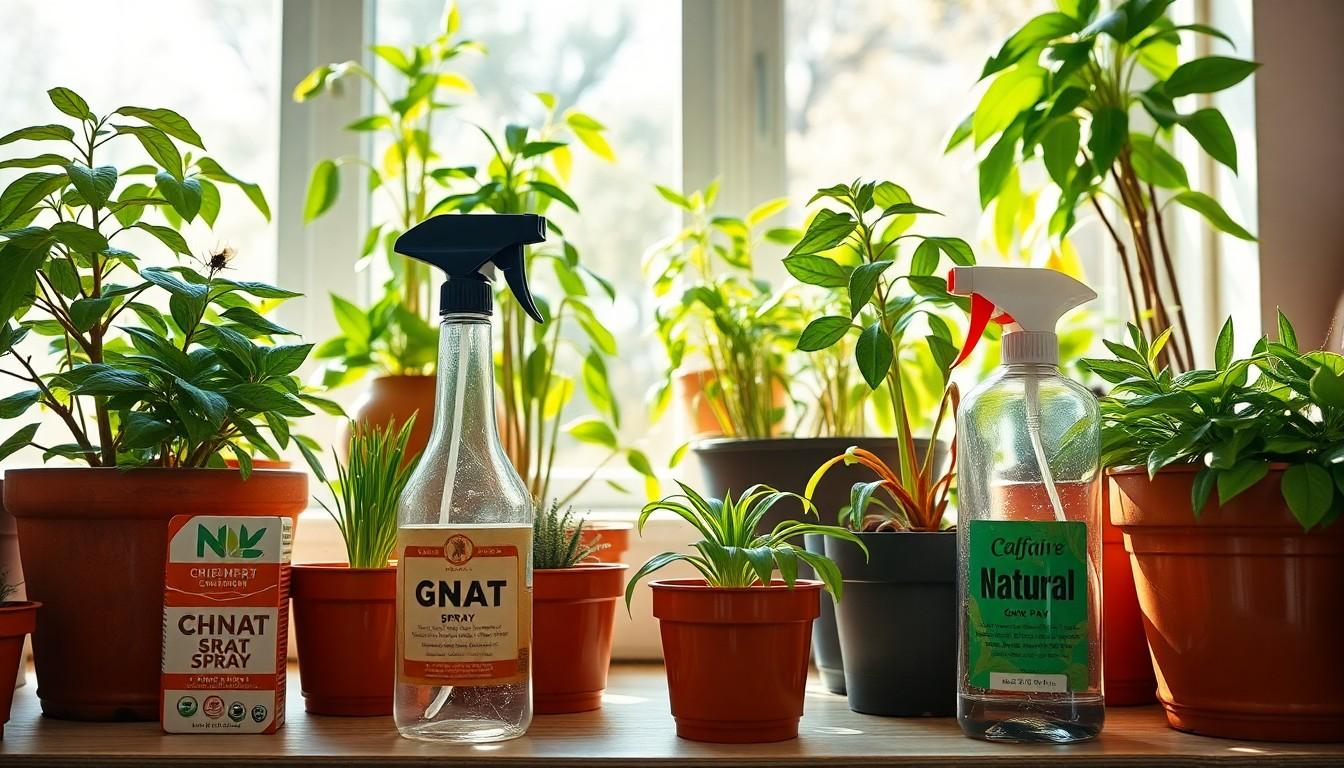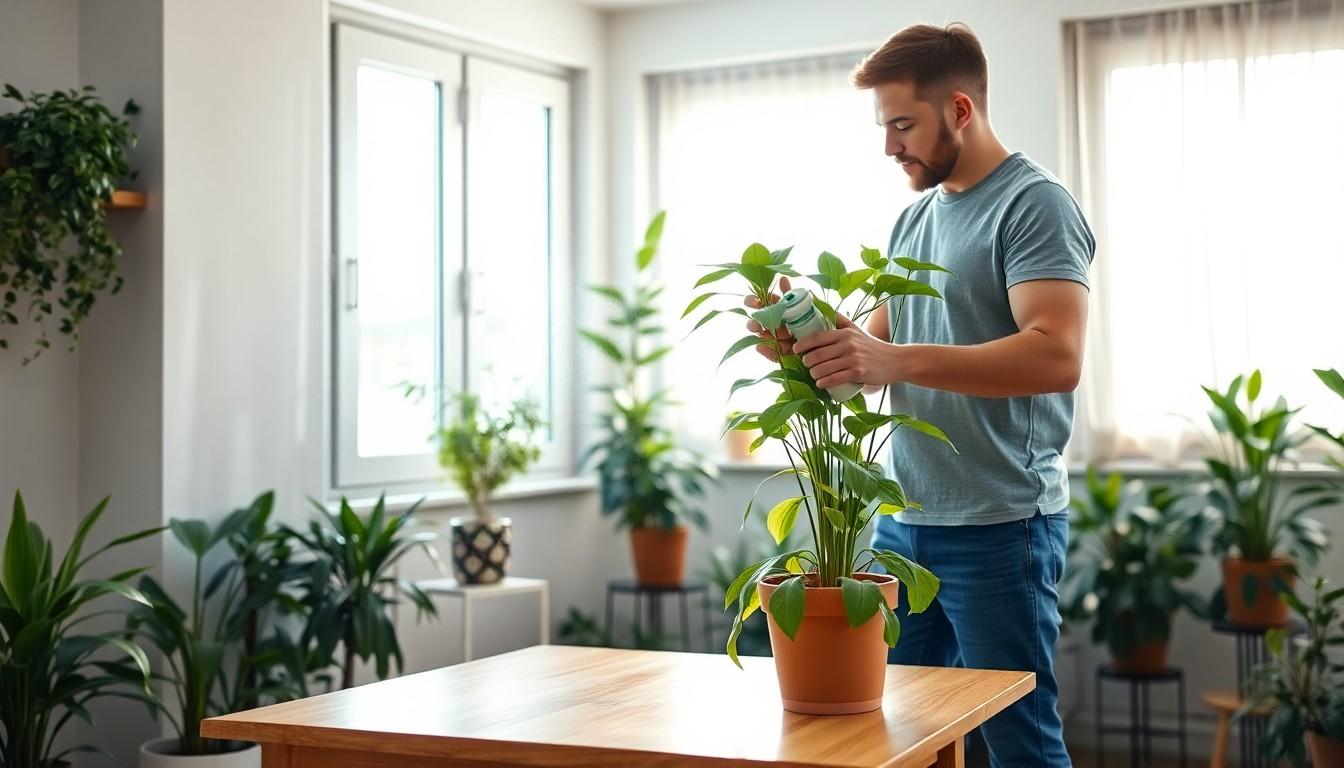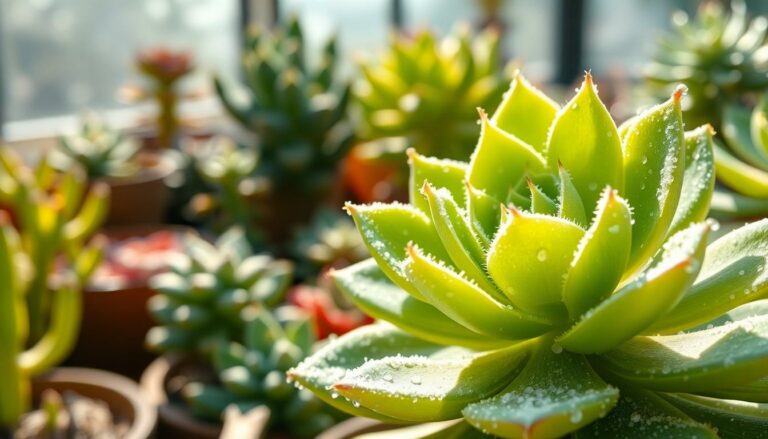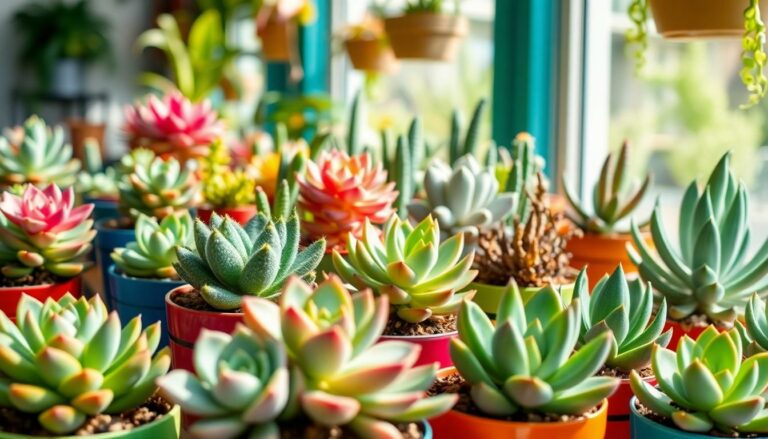Indoor plants can transform any space into a lush paradise, but pesky gnats can turn that paradise into a pest-infested nightmare. These tiny intruders seem to appear out of nowhere, buzzing around like they own the place. Fear not, plant lovers! Gnat spray is here to save the day and restore peace to your green sanctuary.
Overview of Gnat Spray for Indoor Plants
Gnat spray serves as an effective solution for managing fungus gnats, a common pest affecting indoor plants. These tiny insects often appear when soil remains overly moist, creating optimal conditions for their breeding. Using gnat spray helps eliminate adult gnats and their larvae, thus protecting plants from potential damage.
Different formulations exist for gnat sprays, including organic and chemical options. Organic sprays typically contain natural ingredients such as neem oil or insecticidal soap. Chemical alternatives often include synthetic pesticides designed specifically for gnats. It’s important for plant owners to read labels and choose products that suit their preferences and gardening practices.
Application is straightforward. Users should spray directly onto affected plants and surrounding areas. Treating the soil can also disrupt gnat reproduction, providing more comprehensive control. Most gnat sprays require reapplication every few days, especially after watering or heavy rains, ensuring continued effectiveness.
Beyond immediate pest control, gnat sprays contribute to long-term plant health. By reducing gnat populations, they help maintain a clean environment conducive to plant growth. Healthy plants are less susceptible to diseases and other pest infestations.
Selecting the right gnat spray depends on several factors, including the severity of the infestation and the types of indoor plants. Some sprays target multiple pest species, offering broader protection. Understanding product specifications aids users in making informed decisions for their specific needs.
Types of Gnat Spray

Various gnat spray options help combat indoor plant infestations. Each type offers unique benefits catering to different preferences and environmental concerns.
Chemical Gnat Sprays
Chemical gnat sprays typically contain potent insecticides designed to eliminate pests quickly. These products often include ingredients like pyrethrins or imidacloprid, which are effective against adult gnats and larvae. Application is straightforward; users can spray directly onto affected plants and surrounding areas. It’s crucial to follow the instructions on the label for safe usage and effectiveness. Quick action can significantly reduce gnat populations, but it’s important to monitor plants for any potential adverse effects. Regular reapplication ensures continued protection, especially in environments prone to high moisture levels.
Natural Gnat Sprays
Natural gnat sprays focus on eco-friendly ingredients that effectively manage pest populations without harmful chemicals. Products often feature neem oil, essential oils, or garlic extracts, known for repelling gnats. These sprays not only target pests but also promote a healthier environment for plant growth. Most formulations are safe for use around pets and humans, making them an appealing choice for environmentally-conscious plant enthusiasts. Application methods generally mirror those of chemical sprays: spraying directly onto plants and the surrounding area. Repeated application is necessary to maintain effectiveness, particularly in heavily infested settings.
How to Choose the Right Gnat Spray
Selecting the proper gnat spray is crucial for maintaining plant health and effectively managing pest problems. Several key factors influence this decision.
Considerations for Indoor Plants
Indoor plants vary in sensitivity and requirements. Assess specific plant types before selecting a spray. Some plants benefit from organic options like neem oil, while others tolerate chemical sprays better. Light, humidity, and temperature can also affect spray efficacy. Users should ensure proper ventilation during application to protect the plants’ delicate foliage. Furthermore, it’s wise to test sprays on a small section of the plant before applying them broadly.
Effectiveness of Different Options
Effectiveness varies significantly between products. Chemical sprays often provide quick results, targeting pests within hours. In contrast, natural sprays typically take longer to show results but promote safer environments for pets and humans. Users should consider infestation severity when choosing a product. Factoring in application frequency is also essential, as some options may require more frequent use than others. Reading product labels can clarify the expected effectiveness of each option, guiding individuals to make well-informed decisions based on their specific needs.
Application Techniques
Applying gnat spray effectively requires knowledge of best practices and safety guidelines to ensure a healthy indoor environment for plants.
Best Practices for Using Gnat Spray
Identify affected areas before applying gnat spray. Target the base of the plant where gnats typically nest. Evenly coat the foliage and surrounding soil to maximize impact. Use a fine mist for even distribution without saturating surfaces. Regular reapplication every few days enhances effectiveness, especially after watering or rain. Monitoring plants after application helps gauge results. Consider adjusting the frequency of use based on infestation severity and plant response.
Safety Guidelines for Indoor Use
Ensure proper ventilation during application to protect indoor air quality. Wear gloves to avoid skin irritation from chemicals, particularly with potent insecticides. Always follow instructions on the label for correct dosage and usage frequency. Keep pets and children away during and shortly after spraying. Before applying to all plants, test on a small area to check for adverse reactions. Maintain distance from cooking surfaces to prevent contamination. Store gnat sprays in a cool, dry location out of reach of children.
Conclusion
Managing gnats in indoor plants is essential for maintaining a healthy and vibrant environment. Gnat sprays offer effective solutions to tackle these pesky pests while ensuring the well-being of plants. By selecting the right formulation—whether chemical or natural—users can address infestations effectively.
Regular application and monitoring are key to achieving lasting results. Following safety guidelines and testing products on small areas can enhance the overall experience. With the right approach, indoor plant enthusiasts can enjoy their green spaces without the nuisance of gnats, fostering a thriving atmosphere for both plants and people alike.




